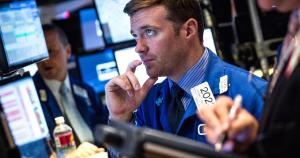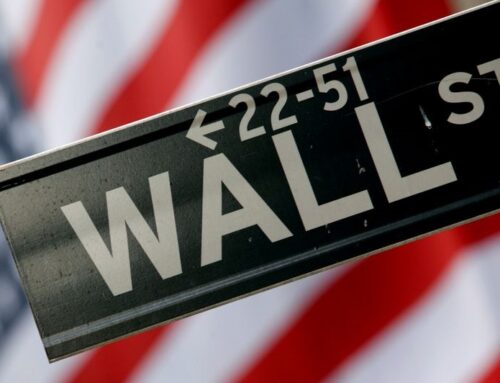Stocks plunge 1 percent on Fed uncertainty
September 18, 2015
U.S. stocks declined Friday, pressured by concerns over the implications of the Federal Reserve’s decision to leave short-term interest rates unchanged.
“The signaling by the Fed yesterday, (that it) doesn’t see confidence to pull the trigger to raise from zero to 25 basis points, I think is negative sentiment that’s hitting the market,” said Art Hogan, chief market strategist at Wunderlich Securities.
“I think they’ve done more harm than good,” he said.
Analysts also noted Friday trading will likely see more volatility due to quadruple witching , the expiration of three related classes of options and futures contracts, as well as individual stock futures options.
The major averages pared losses after falling more than 1 percent in the open. “We opened down in concert with the rest of the world,” said Mark Luschini, chief investment strategist at Janney Montgomery Scott.
The pan-European Stoxx 600 (^STOXX) index closed down 1.8 percent lower as investors digested the Fed’s decision, while the German DAX shed 3 percent, putting it just shy of bear marker territory.
About midway through the local trading session, a “fat finger” incident caused the FTSE 100 index to briefly fall 2 percent before closing down about 1 percent.
“There’s just a lot of uncertainty right now,” said Scott Brown, chief economist at Raymond James, adding that the timing of a Fed rate hike should n’t matter, “but it does for some reason.”
The Dow Jones industrial average traded about 200 points lower. The index lost as much as 283.7 points shortly after the open for the index to fall back into correction territory, or more than 10 percent off its 52-week high.
The S&P 500 and Nasdaq composite remain within 8 percent of their 52-week highs.
Read More Fed dovishness may have stopped soothing market
The Federal Reserve held its key federal funds rate unchanged after the conclusion of its two-day policy meeting Thursday. September was supposed to be the month the U.S. central bank finally came off its zero interest rate policy, but instead it opted to hold steady for at least one more month.
During a press conference after the announcement, Federal Reserve Chair Janet Yellen stressed the path of the Fed’s first rate hike in nearly a decade is more important than its timing.
“The only sliver of hope, post that announcement she left open the door that they could raise rates at a non-press conference meeting,” Hogan said.
Other analysts thought the Fed should not have raised rates, given the global economic environment. Fed funds futures had indicated only about 20 to 30 percent of a chance the Fed would hike in September.
“The people betting real money never expected the Fed to do anything yesterday,” said Nick Raich, CEO of The Earnings Scout. “Ultimately, the Fed did the right thing by holding.”
He noted there were some who thought “if the Fed did not hike, oh my goodness, what do they know, what’s so bad in the economy that we don’t know.”
Odds have also risen that the Fed will now not hike rates until 2016, and RBS says the markets are currently pricing the first full rate rise for March but odds for December were still above 60 percent.
The central bank added to recent Wall Street concerns about the impact of sluggish global growth. In its statement, the Fed said that “recent global economic and financial developments may restrain economic activity somewhat and are likely to put further downward pressure on inflation in the near term.”
China’s surprise devaluation of the yuan in mid-August raised concerns about further slowdown in the world’s second-largest economy and was a factor behind the recent correction in U.S. stocks.
The Fed “said that the U.S. economy is doing OK but they are concerned the global economic turmoil, weakness in China, could have a negative impact on the U.S. economy,” said Stuart Hoffman, chief economist at PNC.
“Clearly they’ve given up on any acceleration in the U.S. economy in the second half of this year compared to the first half this year,” he said.
In Asia, the Shanghai Composite (Shanghai Stock Exchange: .SSEC) index closed up 0.42 percent, while Japan’s Nikkei (Nihon Kenzai Shinbun: .N225) finished 1.96 percent lower.
The iShares MSCI Emerging Markets ETF (EEM)(NYSE Arca: EEM) traded about 0.64 percent lower, after a 2 percent intraday spike and plunge Thursday.
“It’s certainly this fear factor which might intensify over the next several weeks (with the continued) Fed debate over interest rates,” said Peter Cardillo, chief market economist at Rockwell Global Capital.
Gold futures jumped $20.20, or 1.8 percent, to $1,137.30 an ounce as of 12:17 p.m.
The U.S. dollar traded a touch higher against major world currencies, with the euro below $1.14 and the yen at 119.8 yen against the greenback. The dollar traded about 0.1 percent lower against the Mexican Peso.
Crude oil futures for October delivery fell $1.65, or 3.5 percent, to $45.26 a barrel on the New York Mercantile Exchange.
No significant earnings were due Friday. On the data front, leading indicators for August rose 0.1 percent, below the expected 0.2 percent gain.
Treasury yields held near lows touched after the Fed decision Thursday. The 2-year yield was 0.69 percent, while the 10-year yield was 2.15 percent.
In early afternoon trade, the Dow Jones industrial average (Dow Jones Global Indexes: .DJI)declined 204 points, or 1.23 percent, at 16,470, with Merck (MRK) leading decliners and Procter & Gamble (PG) the only advancer.
The S&P 500 (^GSPC) traded down 20 points, or 1.04 percent, at 1,969, with energy leading all sectors lower.
The Nasdaq Composite (^IXIC) traded down 40 points, or 0.86 percent, at 4,850.
The CBOE Volatility index (VIX) considered the best gauge of fear in the market, traded above 22, up about 6.3 percent.
Read More Early movers: ADBE, LQ, AET, IGT, AAPL, BAC, CVC, FB, TXN, QCOM & more
About two stocks declined for every advancer on the New York Stock Exchange, with an exchange volume of 672 million and a composite volume of about 1.97 billion as of 12:20 p.m.
High-frequency trading accounted for 49 percent of this month’s trading volume of about 6.9 billion shares, according to TABB Group. During the peak levels of high-frequency trading in 2009, about 61 percent of 9.8 billion of average daily shares traded were executed by high-frequency traders.
On tap this week:
Saturday
1:30 p.m.: San Francisco Fed President John Williams on the economic outlook
3:30 p.m.: St. Louis Fed President James Bullard on the economy and monetary policy
More From CNBC.com:
- Warning: This market bounce will be short-lived
- The biggest winners off the Fed decision
- Top 7 ways to trade the dovish Fed decision
More From CNBC
Related Post






